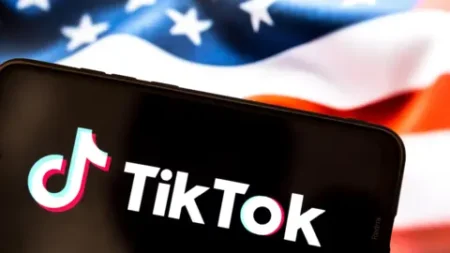Discord, the popular communication platform that has surpassed 200 million monthly users, is now implementing face scanning technology to verify the age of certain users in the United Kingdom and Australia. Initially developed as a space for gamers, Discord has rapidly expanded into various communities, addressing a wide array of topics, including sensitive content. The urgency for implementing such a system has intensified due to the United Kingdom’s upcoming online safety laws, which mandate that platforms hosting adult content must enforce “robust” age verification mechanisms by July. The expansive implications of this requirement signal a broader trend in digital communications regarding user safety and privacy.
Matt Navarra, a social media expert, indicated to BBC that the move isn’t just a singular action by Discord, but rather represents the beginning of a larger transformation within the realm of digital age verification practices. According to Navarra, regulatory bodies are pushing for verifiable proof of users’ ages, and he suggested that facial recognition could be one of the most efficient methods to achieve this. As digital platforms increasingly grapple with the need to comply with stringent laws, there’s a growing expectation for them to enhance their age verification processes.
However, the introduction of facial scanning technology isn’t without controversy. Campaigners in the privacy sector argue that such age verification processes might be ineffective and could lead to significant privacy concerns, raising questions about the security of personal data. Navarra pointed out that the movement toward stringent age verification may soon become standard across the United Kingdom. He commented that the era of merely clicking to confirm someone’s age is fading, with potential repercussions for platforms that fail to correctly verify users. Non-compliance with the new Online Safety Act could lead to severe penalties, including fines up to 10% of a company’s global revenue.
Looking at precedents in the industry, Instagram adopted similar age verification measures in 2022, requiring users wishing to change their age settings to over 18 to either take a selfie video or upload a government-issued ID. This indicates a broader trend across social media platforms focusing on ensuring a safer online environment for minors.
In addition to the immediate implications for users, Discord has outlined its approach to these new verification measures, labeling them as “an experiment.” The face scanning process is proposed to be a one-time check applicable when users encounter content deemed sensitive or if they alter their settings for viewing such material. Users have the option to use the facial recognition method or upload personal identification to validate their age. Discord has assured that any information used for the age check will not persist beyond the verification process, with face scans stored locally on the user’s device and identification photos deleted post-verification.
Despite the assurances from companies like Discord, societal concerns remain prevalent, with organizations like Big Brother Watch cautioning against viewing technology as a cure-all for the challenges of user verification. Senior Advocacy Officer Madeleine Stone warned of various risks associated with such age checks, including potential security breaches and privacy violations. The Age Verification Providers Association acknowledged the existence of privacy-friendly methods for age estimation, stating that contemporary technology could assess a person’s age with remarkable accuracy based on a selfie.
As Australia contemplates enforcing stricter age restrictions, the pressing issue of child safety in digital spaces continues to reignite discussions globally. Recent research findings indicate that over 80% of children aged eight to twelve in Australia use social media platforms intended for users over 13, which underlines the necessity for comprehensive solutions aimed at protecting younger demographics from exposure to inappropriate content on social networks.
In conclusion, as major platforms like Discord lead the way in experimenting with age verification through advanced technology, a deeper discourse surrounding user safety, privacy, and the ramifications of regulatory compliance continues to evolve. The challenge is to balance the need for safeguarding users while ensuring their privacy and rights are not infringed upon in the process. As the digital landscape matures, it is becoming increasingly clear that approaches to user verification will be pivotal in shaping not just the platforms themselves but also the overall guidelines that govern online interactions.











